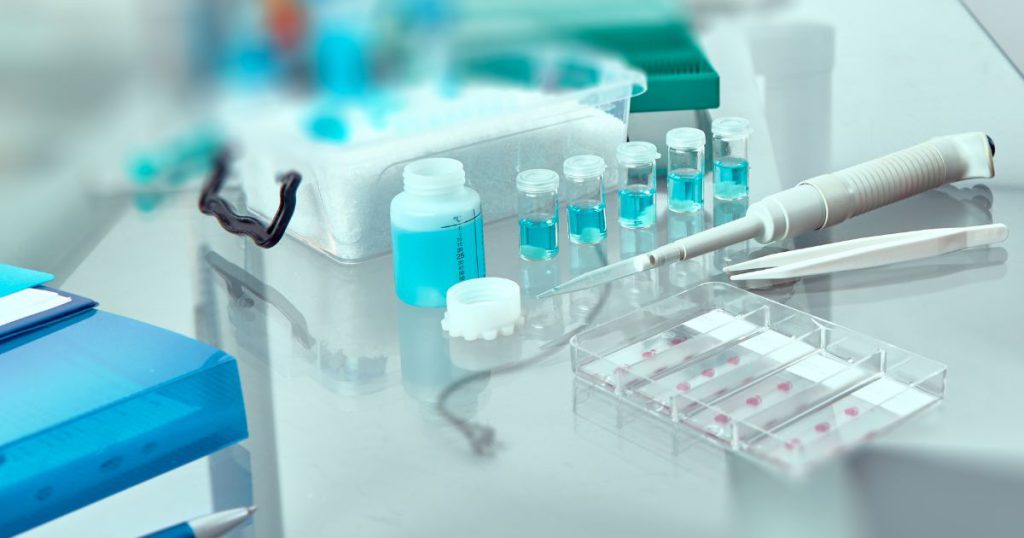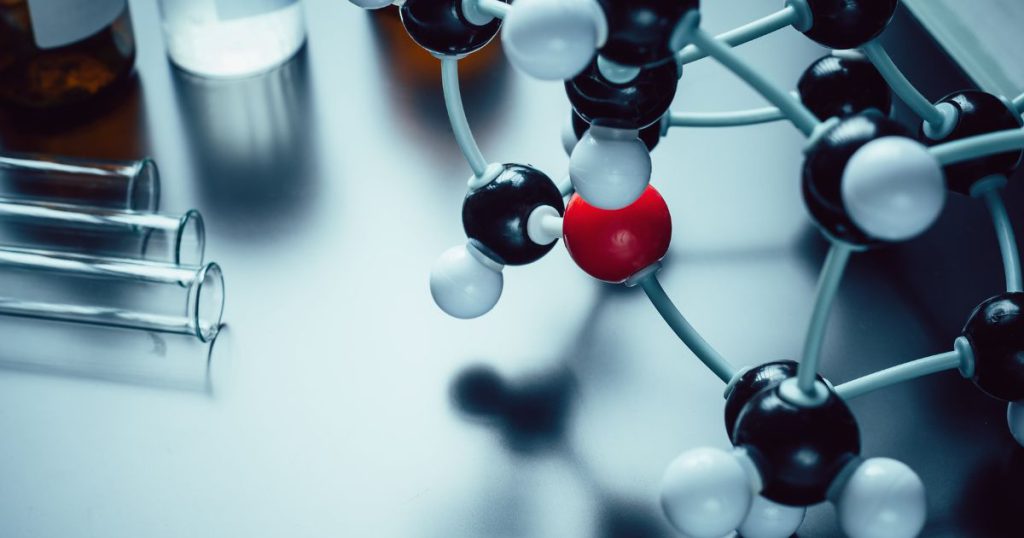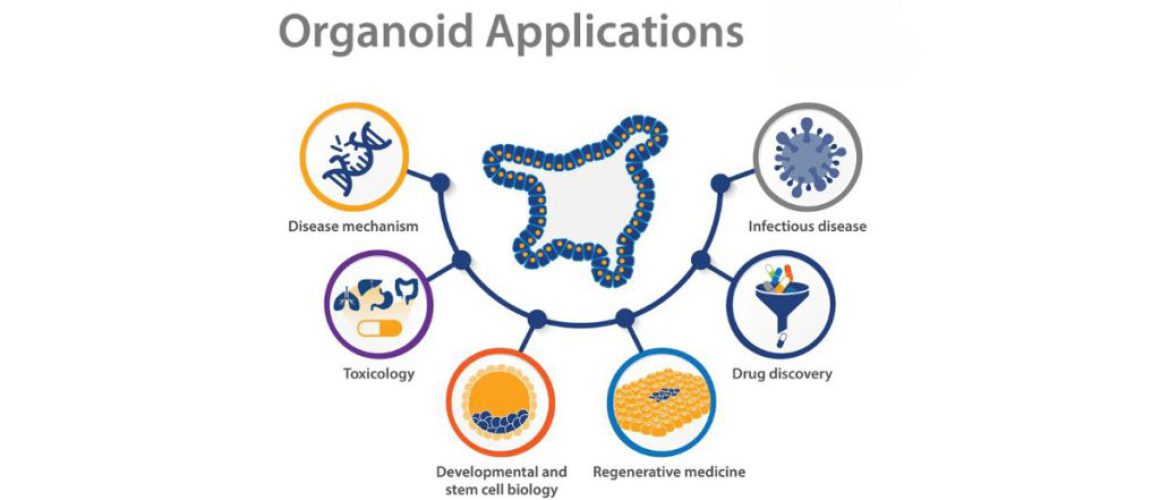Exploring the Use of Organoids in Cancer Biology
Table of Contents
Introduction
In the dynamic field of molecular biology, one innovation that’s making waves is the use of organoids, especially in the realm of cancer biology. These three-dimensional, self-organizing structures derived from stem cells have the ability to mimic the architecture and functionality of original tissues. This makes them a powerful tool for studying disease mechanisms, testing drug efficacy, and even exploring the possibilities of regenerative medicine.
Organoids are revolutionizing the field of molecular biology. They provide a more realistic environment for studying diseases, testing drugs, and even exploring the possibilities of regenerative medicine. The future of medical research is looking brighter with every organoid we grow.
Organoids: A Miniature Revolution in Biology
Before we plunge into the deep end of their application in cancer biology, let’s first get our feet wet by understanding what organoids are and why they’re causing such a ripple in the scientific community. Picture this: miniature versions of human organs, no bigger than a pea, thriving in a petri dish in a lab. Sounds like something out of a sci-fi movie, right? But this is the reality of organoids.
Organoids are essentially mini-organs grown in a lab, and they’re as fascinating as they sound. They are derived from stem cells, those magical cells that have the ability to transform into any type of cell in the body. But these stem cells don’t just transform into any cell; they self-organize into three-dimensional structures that strikingly resemble the organ from which they were derived, for example liver organoids or kidney organoids . It’s like having a tiny, self-contained universe that mirrors the complexity of human organs, all within the confines of a lab dish.
Now, you might be wondering, why all the buzz around these tiny organ replicas? Well, their size is not indicative of their potential. These organoids open up a world of possibilities for research and therapeutic applications. Imagine being able to study the intricacies of human organ function and disease progression on a manageable scale in the lab. Think about the potential for testing new drugs on these 3d organoids to see how human tissues would respond, without the ethical and logistical complications of human trials.
But the potential of organoids extends beyond research. In the realm of therapeutic applications, organoids could be used for regenerative medicine, providing a source of healthy cells to replace damaged or diseased tissues in patients. This could revolutionize treatment for a range of conditions, from heart disease to diabetes.
Comparison of Traditional Cell Cultures and Organoids
| Traditional Cell Cultures | Organoids | |
|---|---|---|
| Structure | Two-dimensional | Three-dimensional |
| Complexity | Simple | Complex |
| Cell Types | Often only one type | Multiple types |
| Functionality | Limited | Mimics organ functionality |
| Use in Research | Disease study, drug testing | Disease study, drug testing, regenerative medicine |
The Role of Organoids in Understanding Disease Mechanisms
Organoids are stepping into the spotlight as invaluable tools in understanding the mechanisms of various diseases, including the big ‘C’ – cancer. Picture this: a three-dimensional, miniaturized version of a tumor, complete with the same complex cellular architecture, all grown in a lab dish. This isn’t just a scientific novelty; it’s a game-changer for cancer research.
Cancer organoids, as these mini-tumors are known, allow researchers to recreate and study the disease in a more realistic environment. It’s like having a scaled-down model of a city to understand its intricate layout, instead of just looking at a flat map. This 3D model gives researchers a more accurate view of the disease, allowing them to delve deeper into the mysteries of cancer.
One of the key benefits of cancer organoids is that they allow researchers to study how cancer cells interact with their environment. In a tumor, cancer cells don’t exist in isolation; they’re part of a complex ecosystem that includes other cell types, blood vessels, and a matrix of proteins that provide structural and biochemical support. By recreating this environment, organoids give researchers a window into this ecosystem, shedding light on how these interactions influence the growth and spread of cancer.
But the potential of organoids doesn’t stop there. They’re also proving to be powerful tools for studying how cancer cells respond to different treatments. By testing drugs on organoids, researchers can observe how cancer cells react, and more importantly, why some cells may survive the treatment. This could provide crucial insights into drug resistance, one of the biggest challenges in cancer treatment.
In essence, organoids are like a crystal ball, giving researchers a glimpse into the inner workings of cancer. They’re helping to unravel the complex web of interactions that drive this disease, paving the way for more effective treatments. So, while the fight against cancer is far from over, with tools like organoids in our arsenal, we’re certainly gaining ground.

How are Organoids Made?
Creating organoids is a fascinating process that combines the principles of stem cell biology and developmental biology. The process begins with stem cells, which are unique cells with the potential to develop into many different cell types in the body. These stem cells can be derived from various sources, such as embryonic stem cells, induced pluripotent stem cells (iPSCs), or adult stem cells from specific organs.
The stem cells are then placed in a special culture medium that mimics the conditions inside the human body. This medium contains a cocktail of growth factors and signaling molecules that guide the stem cells to differentiate into specific cell types and self-organize into three-dimensional structures. The choice of growth factors and signaling molecules depends on the type of organoid being created. For instance, to create intestinal organoids, the stem cells would be exposed to signals that guide them to become intestinal cells.
The stem cells, now bathed in this nutrient-rich medium, start to grow and divide. As they divide, they begin to specialize, turning into different types of cells. Over time, these cells self-organize into three-dimensional structures that resemble miniature organs, complete with multiple cell types and complex architecture. This process can take anywhere from a few days to a few weeks, depending on the type of organoid being grown.
It’s important to note that while organoids can mimic many aspects of organ structure and function, they are not perfect replicas. They lack certain features of whole organs, such as blood vessels and immune cells. Nonetheless, they provide a powerful tool for studying human biology and disease in the lab.
Organoids in Toxicology: A New Frontier
Toxicology, the study of harmful effects of substances on living organisms, is another field where organoids are making waves. Traditional toxicity testing has often relied on animal models or two-dimensional cell cultures. While these methods have served us well, they have their limitations. Enter organoids, stage left. With their ability to mimic human organ systems, organoids are poised to revolutionize the way we assess the safety and toxicity of new drugs.
Animal models, while useful, are not perfect replicas of human biology. What’s toxic to a mouse may not be toxic to a human, and vice versa. Two-dimensional cell cultures, on the other hand, lack the complex structure and interactions of a real organ. They’re like trying to understand a forest by looking at a single tree. Organoids, however, offer a more accurate representation. They’re like a miniature organ, complete with multiple cell types interacting in a three-dimensional structure. This makes them a more realistic model for studying how a substance might affect a human organ.
But the potential of organoids in toxicology doesn’t stop at drug testing. They could also be used to study the effects of environmental toxins, like air pollution or heavy metals. Imagine being able to study the impact of air pollution on lung organoids, or the effect of lead exposure on brain organoids. It’s a powerful tool, not just for understanding the effects of these toxins, but also for developing strategies to mitigate their impact. In the world of toxicology, organoids are not just a new frontier, they’re a game changer.
Major Steps in Organoids Culture
- Isolation of stem cells from the organ of interest.
- Culture of stem cells in a three-dimensional matrix that supports growth and differentiation.
- Addition of growth factors and other substances to the culture to promote organoid formation.
- Maintenance and expansion of organoids for further study or application.
Organoids and Stem Cell Biology: A Perfect Match
The world of stem cell biology is a realm of infinite possibilities, and when you bring organoids into the mix, things get even more exciting. Particularly in the field of regenerative medicine, the marriage of organoids and stem cells is like a match made in scientific heaven. Organoids are typically grown from pluripotent stem cells, the biological chameleons that have the ability to morph into any cell type in the body. This opens up a world of potential applications, from disease modeling to personalized medicine, and yes, even the possibility of growing replacement tissues or organs for transplantation.
Imagine having the ability to grow a new heart from a patient’s own cells, reducing the risk of organ rejection. Or consider the potential to create a model of a patient’s tumor in the lab, allowing doctors to test different treatments and find the most effective one. This isn’t just theoretical – researchers are already making strides in these areas. For instance, scientists have successfully grown mini kidneys from stem cells, which could potentially be used in the future to treat kidney disease.
But it’s not just about growing replacement parts. Organoids can also help us understand how organs develop and function at a cellular level. By observing how stem cells self-organize into organoids, we can gain insights into the processes that drive organ development in the human body. This could lead to new ways to treat developmental disorders or diseases that arise from organ dysfunction. In the grand scheme of things, the union of organoids and stem cell biology is more than just a perfect match – it’s a powerful alliance that could revolutionize medicine as we know it.
Organoids in Drug Discovery: Accelerating the Pace
The world of drug discovery is a complex and often lengthy process, but organoids are stepping in to put the pedal to the metal. Particularly in the battle against cancer, organoids are proving to be game-changers. These miniaturized versions of human organs provide a more realistic environment for testing new drugs, allowing researchers to see how these potential treatments interact with human-like tissue. This is a significant upgrade from traditional two-dimensional cell cultures, which can’t fully replicate the complex interactions within a human organ.
By testing drugs on organoids that closely mimic human tumors, researchers can gain a deeper understanding of how these drugs work, and more importantly, how effective they might be in a real-world scenario. This isn’t just about whether a drug can kill cancer cells – it’s about understanding the drug’s behavior in a complex biological environment. How does it interact with different cell types? What are its effects on healthy tissue? Are there any unexpected side effects? These are the kinds of questions that organoid models can help answer.
But the benefits of organoids in drug discovery don’t stop there. They can also help to streamline the drug development process, potentially bringing new treatments to patients more quickly. By providing a more accurate prediction of a drug’s efficacy and safety, organoids can help to reduce the number of unsuccessful clinical trials, saving both time and resources. In the high-stakes world of drug discovery, where a single clinical trial can cost millions of dollars and take several years, the ability to weed out ineffective drugs earlier in the process is a huge advantage. So, in the race to find new treatments, organoids aren’t just accelerating the pace – they’re reshaping the track.

Organoids in Infectious Disease Research
Shifting gears a bit, let’s take a detour into the realm of infectious disease research. While the spotlight often falls on their role in cancer biology, organoids are also playing a pivotal role in our understanding of infectious diseases. From influenza to Zika, these miniaturized versions of human organs are helping us to unravel the complex interactions between pathogens and their human hosts.
Take, for example, the study of viruses. Traditional methods of studying viral infections often involve two-dimensional cell cultures or animal models, both of which have their limitations. Enter organoids. These three-dimensional structures provide a more accurate representation of human tissues, allowing researchers to observe how viruses infect cells, replicate, and interact with their surroundings in a more realistic environment. This can lead to valuable insights into disease progression and the body’s response to infection.
But the potential of organoids in infectious disease research doesn’t stop at understanding disease progression. They’re also proving to be powerful tools in the development of new treatment strategies. By testing antiviral drugs on organoids, researchers can gain a better understanding of how these treatments work at a cellular level and how effective they might be in a real-world scenario. So, while our journey into the world of organoids may have started with cancer biology, it’s clear that their potential reaches far beyond, offering new hope in the fight against infectious diseases.
Organoids in Biochemistry: A Closer Look
Diving deeper into the microscopic world, organoids are proving to be a game-changer from a biochemical perspective as well. These miniaturized organ models offer a unique platform to study cellular processes and interactions in a way that’s just not possible with traditional two-dimensional cell cultures. They provide a three-dimensional environment that closely mimics the conditions inside the human body, allowing for a more accurate study of cellular behavior.
One of the key areas where organoids are making a difference is in the study of cell communication. Cells in our body are social creatures; they constantly interact and communicate with each other using a variety of biochemical signals. Organoids, with their complex cellular architecture, allow researchers to observe this cellular chit-chat in a more natural environment. They can help us understand how cells respond to different signals, how they coordinate their activities, and how these processes contribute to the overall function of the organ.
But the potential of organoids extends beyond just understanding normal cellular processes. They’re also an invaluable tool in studying how these processes can go awry in diseases like cancer. For instance, organoids can be used to investigate how changes in cellular communication can lead to uncontrolled cell growth, a hallmark of cancer. By providing a more realistic model of human tissues, organoids are helping to shed light on the complex biochemical processes that underpin disease, paving the way for new therapeutic strategies.
Organoids in Gastroenterology, Internal Medicine, and Pediatric Research
The versatility of organoids is truly remarkable, with their use extending far beyond the realm of cancer biology. In fact, they’re making waves in a variety of medical specialties, including gastroenterology, internal medicine, and pediatric research. Each type of organoid serves as a miniature version of its corresponding organ, providing a unique window into the inner workings of our body’s complex systems.
Take gastroenterology, for example. Researchers are using human intestinal organoids to study a range of digestive disorders, from inflammatory bowel disease to colorectal cancer. These “mini-guts” mimic the structure and function of the human intestine, allowing scientists to investigate how different diseases affect intestinal cells and disrupt normal digestive processes. Similarly, in the field of internal medicine, organoids are proving invaluable. Lung organoids, for instance, are shedding light on a range of respiratory diseases, providing insights into conditions like cystic fibrosis and chronic obstructive pulmonary disease.
The impact of organoids is also being felt in pediatric research. Organoids derived from pediatric tissues can help us understand how diseases manifest and progress in children, who often have different responses to diseases and treatments compared to adults. For instance, brain organoids are being used to study pediatric neurological conditions, providing unprecedented insights into the developing brain. In each of these fields, organoids are not just enhancing our understanding of disease, but also paving the way for the development of more effective treatments.
Examples of Organoids in Different Medical Specialties
| Medical Specialty | Use of Organoids |
|---|---|
| Gastroenterology | Studying digestive disorders |
| Internal Medicine | Investigating a range of diseases at the organ level |
| Pediatric Research | Understanding childhood diseases and development |
Key Applications of Organoids in Medical Research
- Disease Modeling: Organoids can mimic the complex structure of human organs, making them ideal for studying disease mechanisms.
- Drug Testing: Organoids allow for more accurate and efficient testing of new drugs, speeding up the drug discovery process.
- Regenerative Medicine: Organoids, grown from stem cells, hold promise for growing replacement tissues or even organs for transplantation.
- Personalized Medicine: Patient-derived organoids can be used to test individual responses to different treatments, paving the way for more personalized therapeutic approaches.
Organoids in Colorectal Surgery: A Case Study
Colorectal cancer is a major health concern worldwide, and surgery is often a key part of treatment. However, predicting how a patient will respond to surgery can be challenging. This is where organoids can help. By creating organoids from a patient’s own tumor cells, surgeons can test different surgical and treatment approaches in a controlled environment before applying them to the patient. This personalized approach could significantly improve patient outcomes.
Consider the process: a surgeon removes a small sample of the patient’s tumor during a biopsy. This sample is then used to grow organoids in the lab, which mimic the behavior of the patient’s cancer. These organoids can be subjected to various treatments, including radiation, chemotherapy, and even experimental drugs. By observing how the organoids respond, doctors can gain valuable insights into how the patient’s tumor might react. This can help them tailor the treatment plan to the patient’s specific needs, potentially improving the effectiveness of the treatment and reducing unwanted side effects.
Moreover, organoids can also be used to simulate the surgical removal of the tumor. By studying how the organoids react to different surgical techniques, surgeons can plan the most effective approach for removing the patient’s tumor. This could lead to more successful surgeries, quicker recovery times, and ultimately, better patient outcomes. In this way, organoids are not just a tool for understanding disease – they’re a tool for personalizing medicine, bringing us one step closer to the goal of providing every patient with the best possible care.
The beauty of organoids lies in their complexity. They are not just clumps of cells; they are mini-organs that recreate the architecture and functionality of our body’s tissues. This makes them a powerful tool for understanding health and disease.
Conclusion
As we’ve seen, organoids are a powerful tool in molecular biology, offering new insights and possibilities in cancer research and beyond. From understanding disease mechanisms to accelerating drug discovery, organoids are shaping the future of medical research. As we continue to refine these techniques and explore new applications, there’s no telling what other breakthroughs lie ahead.
This post is part of the Molecular Biology category and belongs to the series Molecular Biology: A Comprehensive Guide for Medical Technology
Also have a look at my other posts: Molecular and Therapeutic Effect of CRISPR in Cancer Treatment and The Role of Biochemistry and Molecular Biology Techniques in Understanding Genetic Disorders
Disclaimer: This blog post is intended for informational purposes only and does not constitute medical advice. Always consult with a healthcare professional for medical advice.
Frequently Asked Questions
What are organoids and why are they important in cancer research?
Organoids are essentially mini-organs grown in a lab from stem cells. They have the ability to self-organize into structures resembling the organ from which they were derived. This ability to mimic the complexity of human organs on a smaller scale opens up a world of possibilities for research and therapeutic applications, particularly in the field of cancer research.
How are organoids used in understanding disease mechanisms?
Organoids are proving to be invaluable tools in understanding the mechanisms of various diseases, including cancer. By recreating the complex cellular architecture of tumors, cancer organoids allow researchers to study the disease in a more realistic environment. This can lead to a better understanding of how cancer cells interact with their environment, how they respond to different treatments, and why some cells may become resistant to therapy.
What is the role of organoids in toxicology?
Beyond disease mechanisms, organoids are also opening new doors in the field of toxicology. Traditional toxicity testing often relies on animal models or two-dimensional cell cultures, both of which have limitations. Organoids, on the other hand, offer a more accurate representation of human organ systems, making them a promising tool for assessing the safety and toxicity of new drugs.
How do organoids and stem cell biology intersect?
The intersection of organoids and stem cell biology is a fascinating area of study, particularly when it comes to regenerative medicine. Organoids are typically grown from pluripotent stem cells, which have the ability to differentiate into any cell type in the body. This means they can potentially be used to grow replacement tissues or even organs for transplantation.
How are organoids revolutionizing drug discovery?
The use of organoids is revolutionizing the process of drug discovery, particularly in the fight against cancer. By testing new drugs on organoids that closely mimic human tumors, researchers can gain valuable insights into the efficacy and potential side effects of these drugs. This can help to streamline the drug development process, potentially bringing new treatments to patients more quickly.
What is the role of organoids in infectious disease research?
While the focus is often on cancer biology, organoids are also making significant contributions to the field of infectious disease research. For example, organoids can be used to study how viruses interact with human tissues, providing valuable insights into disease progression and potential treatment strategies.
How are organoids used in various medical specialties?
The use of organoids extends beyond cancer biology, with applications in various medical specialties including gastroenterology, internal medicine, and pediatric research. For instance, intestinal organoids are being used to study a range of digestive disorders, while lung organoids are shedding light on respiratory diseases.
How are organoids used in colorectal surgery?
To illustrate the practical applications of organoids in medicine, let’s consider a specific example: colorectal surgery. Colorectal cancer is a major health concern worldwide, and surgery is often a key part of treatment. However, predicting how a patient will respond to surgery can be challenging. This is where organoids can help. By creating organoids from a patient’s own tumor cells, surgeons can test different surgical and treatment approaches in a controlled environment before applying them to the patient. This personalized approach could significantly improve patient outcomes.
This post is part of my Molecular Biology: A Comprehensive Guide for Medical Technology series.
See also these posts: The Role of Biochemistry and Molecular Biology Techniques in Understanding Genetic Disorders and “Immunofluorescence Staining: My Experience with Nasopharyngeal Carcinoma Cells”
Sean Schepers is a third-year Medical Technology student at Mahidol University with a passion for all things health and medicine. His journey into the world of medicine has led him to explore various fields. Sean's blog posts offer a unique perspective, combining his academic insights with personal experiences. When he's not studying or blogging, Sean enjoys keeping up with politics and planning his future career in medicine.
In addition to his studies, Sean serves as the chairman of the Rights, Liberties, and Welfare Committee, a role that reflects his commitment to advocacy and social justice. Beyond his academic pursuits, Sean offers tutoring services in English and Biology, further demonstrating his dedication to education and mentorship. His journey is one of continuous discovery, and he invites others to join him as he explores the dynamic and transformative world of medical technology.


